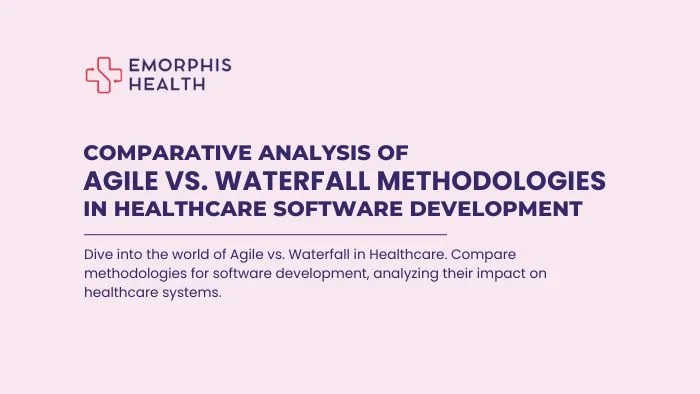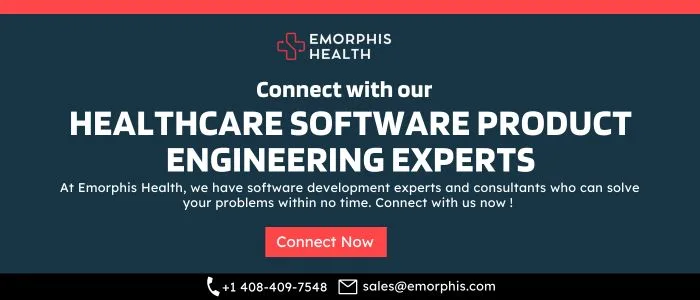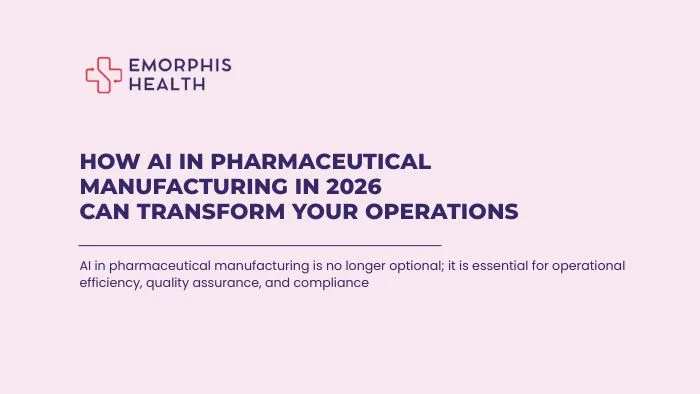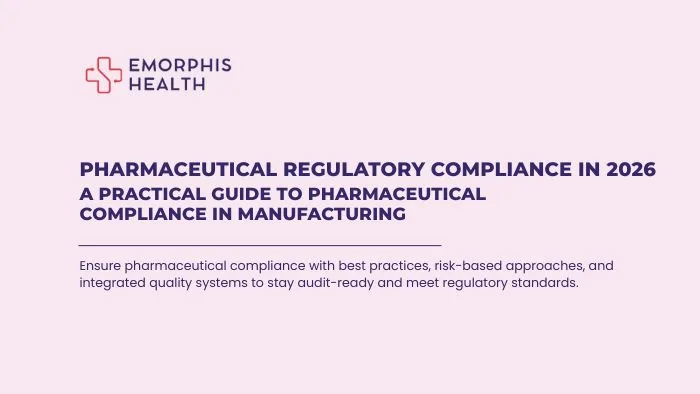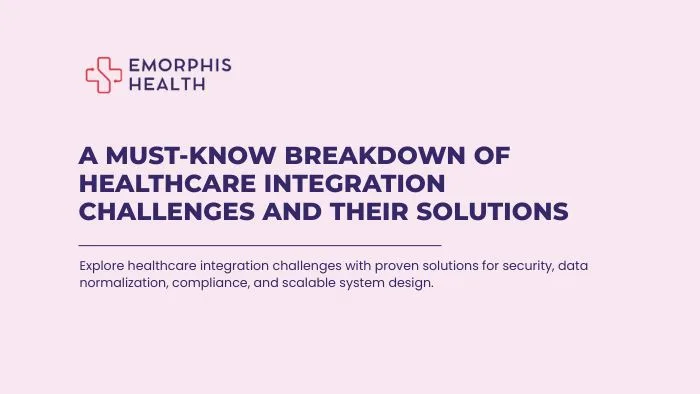Introduction
See Contents
In the realm of Agile vs. Waterfall in Healthcare software development, understanding the differences between these methodologies is paramount. Agile, with its iterative approach, and Waterfall, with its sequential steps, offer distinct paths for managing projects in the healthcare domain.
Overview of Agile and Waterfall Methodologies
Agile Methodology – Agile vs. Waterfall in Healthcare, Agile stands out for its flexibility and adaptability. Teams work in short iterations, continuously refining the software based on feedback from healthcare professionals and patients.
Waterfall Methodology – In contrast, the Agile vs. Waterfall in Healthcare model follows a linear progression. Each phase, from requirements gathering to deployment, flows downwards like a waterfall. This approach prioritizes thorough planning and documentation.
Agile vs. Waterfall in Healthcare – When it comes to Agile vs. Waterfall in Healthcare software development, understanding the nuances of each methodology is crucial.
Objective of the Study
This study compares the effectiveness of Agile and Waterfall methodologies in Agile vs. Waterfall in Healthcare software development. By analyzing key metrics such as project management and stakeholder collaboration, we seek to provide insights that can inform decision-making in the healthcare IT sector.
This study aims to evaluate how Agile and Waterfall methodologies perform in the unique context of Agile vs. Waterfall in Healthcare software development. Through real-world case studies and careful analysis, we aim to identify the strengths and weaknesses of each approach and provide recommendations for healthcare IT professionals.
Agile Methodology
Agile Methodology Frameworks (e.g., Scrum, Kanban)
Scrum and Kanban are popular Agile methodologies for software development.
Scrum divides work into sprints, with ceremonies like sprint planning and daily stand-ups to keep teams aligned and focused.
Kanban visualizes workflow on a board, promoting a pull-based approach and flexibility in task prioritization.
Both offer adaptability to project needs, making them effective in diverse contexts, including healthcare.
Characteristics of Agile Development in Healthcare
In the context of healthcare software development, Agile methodologies exhibit several key characteristics that differentiate them from traditional waterfall approaches.
One of the defining features of Agile development is its iterative nature. Instead of attempting to define all requirements upfront and delivering a final product at the end of a lengthy development cycle, Agile teams work in short, iterative cycles, delivering small increments of functionality at regular intervals. This iterative approach allows teams to gather feedback early and often, enabling them to course-correct and refine their work based on user input and changing priorities.
Another characteristic of Agile development is the emphasis on cross-functional teams. Agile teams are typically comprised of individuals with diverse skills and expertise, including developers, designers, testers, and domain experts. By bringing together individuals with different backgrounds and perspectives, Agile teams are better equipped to tackle complex problems, innovate, and deliver high-quality software that meets the needs of end-users.
Additionally, Agile development is characterized by its customer-centric approach. Throughout the development process, Agile teams actively engage with stakeholders, including healthcare professionals, patients, and other end-users, to ensure that the software meets their needs and expectations. By soliciting feedback early and often, Agile teams can validate assumptions, identify potential issues, and make informed decisions that lead to better outcomes.
Overall, the iterative nature, cross-functional teams, and customer-centric approach of Agile development make it well-suited for addressing the unique challenges and complexities of healthcare software development.
Advantages of Agile in Healthcare Software Development
Agile methodologies offer several advantages for healthcare software development.
1. Rapid Adaptation
Agile methodologies enable teams to respond quickly and effectively to changing requirements, priorities, and market conditions. By working in short, iterative cycles, Agile teams can incorporate feedback and make adjustments as needed, ensuring that the software remains aligned with evolving user needs and business goals.
2. Enhanced Collaboration
Agile methodologies emphasize close collaboration and communication among team members, stakeholders, and end-users. By fostering a culture of transparency, trust, and accountability, Agile teams can leverage the collective expertise and insights of all stakeholders, resulting in better decision-making, increased innovation, and higher-quality outcomes.
3. Improved Quality
Agile methodologies prioritize the delivery of working software at regular intervals, allowing teams to identify and address issues early in the development process. By continuously testing, integrating, and validating their work, Agile teams can ensure that the software meets the highest standards of quality, reliability, and usability.
4. Increased Stakeholder Satisfaction
Agile methodologies promote frequent and meaningful engagement with stakeholders throughout the development process. By involving stakeholders in sprint planning, reviews, and retrospectives, Agile teams can solicit feedback, validate assumptions, and ensure that the software meets their needs and expectations. This collaborative approach fosters a sense of ownership and investment among stakeholders, leading to greater satisfaction and buy-in.
5. Faster Time-to-Market
Agile methodologies enable teams to deliver value to end-users more quickly and predictably. By breaking down work into small, manageable chunks and delivering incremental improvements at regular intervals, Agile teams can accelerate the pace of development, reduce time-to-market, and gain a competitive edge in the marketplace.
Overall, the advantages of Agile in healthcare software development make it a compelling choice for organizations looking to innovate, collaborate, and deliver high-quality solutions that meet the needs of patients, healthcare professionals, and other stakeholders.
Challenges and Limitations of Agile in Healthcare Context
While Agile methodologies offer numerous benefits for healthcare software development, they also present certain challenges and limitations that organizations must address.
– Regulatory Compliance
Healthcare software development is subject to stringent regulatory requirements, including HIPAA, FDA, and GDPR. Ensuring compliance with these regulations can be challenging in an Agile environment, where requirements are subject to change and documentation may be less comprehensive. Organizations must carefully balance the need for agility with the need for regulatory compliance, implementing processes and controls to mitigate risk and ensure adherence to relevant standards.
– Resource Constraints
Agile methodologies require dedicated team members and resources to be successful. In the healthcare industry, where budgets and resources may be limited, organizations may struggle to allocate the necessary time, talent, and resources to Agile initiatives. This can lead to overburdened teams, competing priorities, and project delays, undermining the effectiveness of Agile development.
– Cultural Resistance
Transitioning to Agile methodologies can be challenging, especially in organizations with entrenched cultures and practices. Healthcare organizations, in particular, may have hierarchical structures, siloed departments, and risk-averse cultures that are not conducive to Agile ways of working. Overcoming cultural resistance requires strong leadership, effective change management, and ongoing education and training to help teams understand the value of Agile and embrace new ways of working.
– Distributed Teams
Agile methodologies emphasize co-location and face-to-face communication, which can be challenging in healthcare organizations with distributed teams, remote workers, and outsourced partners. Managing communication, collaboration, and coordination across different locations and time zones requires additional effort and resources, potentially impacting team dynamics, productivity, and project outcomes.
– Complexity of Healthcare Systems
Healthcare software development is inherently complex, involving multiple stakeholders, interconnected systems, and evolving regulations. Agile methodologies may struggle to accommodate the complexity of healthcare projects, particularly those involving legacy systems, interoperability challenges, and strict compliance requirements. Organizations must carefully assess the suitability of Agile for their specific context, considering factors such as project size, complexity, and risk tolerance.
Despite these challenges and limitations, Agile methodologies offer significant benefits for healthcare software development, including increased flexibility, collaboration, and responsiveness. By addressing these challenges proactively and leveraging Agile principles and practices effectively, healthcare organizations can unlock the full potential of Agile and deliver innovative solutions that improve patient care, streamline operations, and drive business success.
Waterfall Methodology
Phases of Waterfall Model
The Waterfall Model follows a sequential approach to software development, with distinct phases that flow downwards like a waterfall.
- Requirements Gathering – Stakeholders define the project requirements in detail, outlining the desired features and functionality of the software.
- Design – Based on the requirements, the software architecture and system design are developed, outlining how the software will be structured and how components will interact.
- Implementation – The actual coding and development of the software occur, with developers translating the design into executable code.
- Testing – The software is rigorously tested to ensure that it meets the specified requirements and functions correctly under various conditions.
- Deployment – Once testing is complete, the software is deployed to the production environment and made available to end-users.
- Maintenance – After deployment, the software undergoes ongoing maintenance and support to address bugs, issues, and enhancements over time.
The Waterfall Model is characterized by its linear progression from one phase to the next, with each phase building upon the work completed in the previous phase. While this approach offers clarity and structure, it can also be inflexible and less responsive to change, particularly in dynamic environments like healthcare.
Traditional Approach to Healthcare Software Development
In the realm of healthcare software development, the traditional approach often aligns with the Waterfall Methodology. Healthcare organizations typically follow a structured, methodical process for developing software, given the critical nature of healthcare systems and the need for precision and reliability.
In a traditional healthcare software development process, stakeholders, including healthcare providers, administrators, and IT professionals, collaborate to define requirements and design specifications upfront. Once the requirements are finalized, development teams proceed with coding and implementation, followed by testing, deployment, and maintenance.
This sequential approach aims to ensure that the software meets regulatory requirements, complies with industry standards, and delivers optimal performance and usability for healthcare professionals and patients.
Suitability of Waterfall in Healthcare Projects
The Waterfall Methodology may be well-suited for certain healthcare projects, particularly those with well-defined requirements, stable environments, and minimal expected changes. In healthcare settings where regulatory compliance is paramount and precision is critical, the structured nature of the Waterfall Model can provide clarity, predictability, and assurance that requirements will be met.
Furthermore, in scenarios where the scope and objectives of the project are well understood upfront, and there is little room for ambiguity or experimentation, the Waterfall Methodology can offer a straightforward and systematic approach to software development.
However, it’s essential to recognize that the Waterfall Methodology may not be suitable for all healthcare projects, particularly those that require frequent adaptation to changing requirements, rapid innovation, and close collaboration with end-users.
Advantages of Waterfall Methodology
The Waterfall Methodology offers several advantages for healthcare software development.
1. Clarity and Structure
The sequential nature of the Waterfall Model provides clear milestones, deliverables, and dependencies, making it easier to plan, manage, and track progress throughout the project lifecycle.
2. Documentation and Traceability
Each phase of the Waterfall Model produces comprehensive documentation, including requirements specifications, design documents, and test plans, facilitating traceability and compliance with regulatory standards.
3. Predictability and Control
By defining requirements upfront and following a predetermined plan, the Waterfall Methodology offers a high level of predictability and control over project scope, schedule, and budget.
4. Regulatory Compliance
The structured approach of the Waterfall Model lends itself well to meeting regulatory requirements and industry standards in healthcare, ensuring that software products are safe, secure, and compliant with relevant regulations.
Limitations and Risks of Waterfall in Healthcare Software Development
Despite its benefits, the Waterfall Methodology poses certain limitations and risks for healthcare software development.
– Limited Flexibility
The linear progression of the Waterfall Model makes it challenging to accommodate changes or updates to requirements once the project is underway, potentially leading to scope creep, delays, and cost overruns.
– Lack of Stakeholder Involvement
In the Waterfall Model, stakeholder involvement tends to be front-loaded, with limited opportunities for feedback and collaboration throughout the development process. This can result in misalignment between the final product and user needs.
– Late Discovery of Issues
Because testing occurs towards the end of the development lifecycle in the Waterfall Model, issues and defects may not be identified until late stages, making them more costly and time-consuming to address.
– Inefficient Use of Resources
The Waterfall Methodology may lead to inefficiencies and bottlenecks, as resources are allocated sequentially to each phase of the project, regardless of actual need or priority.
While the Waterfall Methodology offers certain benefits for healthcare software development, such as clarity, documentation, and predictability, it also comes with inherent limitations and risks, including inflexibility, limited stakeholder involvement, late discovery of issues, and inefficient resource utilization.
Healthcare organizations must carefully evaluate the suitability of the Waterfall Model for their specific project requirements and consider alternative methodologies, such as Agile, that offer greater flexibility, collaboration, and responsiveness to change.
Comparative Analysis of Agile vs. Waterfall
When comparing Agile vs. Waterfall in Healthcare methodologies, it’s essential to examine various aspects of software development to determine which approach best fits the unique needs and challenges of healthcare projects.
A. Project Management and Planning
Agile vs. Waterfall Healthcare methodologies differ significantly in their approach to project management and planning.
Agile methodologies prioritize flexibility and adaptability in project management. Teams plan and execute work in short iterations, known as sprints, with frequent checkpoints for review and adjustment. Planning in Agile is iterative, with requirements evolving throughout the project based on stakeholder feedback.
In contrast, the Waterfall Methodology follows a sequential approach to project management. Planning occurs upfront, with all requirements and milestones defined at the beginning of the project. Once the plan is set, development progresses linearly through each phase, with little room for deviation.
While Agile emphasizes flexibility and ongoing adjustment, Waterfall relies on upfront planning and adherence to a predetermined schedule.
B. Flexibility and Adaptability
When it comes to flexibility and adaptability, there are notable differences between Agile and Waterfall methodologies in healthcare software development.
Agile methodologies excel in adaptability, allowing teams to respond quickly to changes in requirements, technology, or market conditions. By breaking the project into small, manageable chunks, Agile teams can adjust priorities and pivot as needed to deliver value incrementally.
On the other hand, Waterfall methodologies are less flexible, as changes to requirements or scope can be challenging to accommodate once development is underway. This rigidity can lead to delays and inefficiencies if unexpected issues arise during the project.
While Agile offers flexibility through its iterative approach, Waterfall’s linear progression can be less adaptable to change.
C. Stakeholder Involvement and Collaboration
The level of stakeholder involvement and collaboration varies between Agile and Waterfall methodologies in healthcare software development.
Agile methodologies emphasize continuous collaboration and feedback from stakeholders throughout the development process. By involving stakeholders in sprint planning, reviews, and retrospectives, Agile teams ensure that the software meets user needs and expectations.
In contrast, Waterfall methodologies typically involve stakeholders primarily in the requirements-gathering phase, with limited opportunities for collaboration once development begins. This can lead to misalignment between the final product and user requirements.
While Agile promotes ongoing collaboration, Waterfall tends to involve stakeholders mainly in the initial stages of the project.
D. Risk Management
Risk management approaches differ between Agile and Waterfall methodologies in healthcare software development.
Agile methodologies employ a proactive approach to risk management, with risks identified and addressed continuously throughout the project. By breaking work into small iterations and focusing on delivering value incrementally, Agile teams can mitigate risks early and adapt to changing circumstances.
Conversely, Waterfall methodologies tend to address risks upfront during the planning phase, with limited flexibility to manage new risks as they arise during development. This can lead to challenges if unforeseen risks emerge later in the project.
While Agile addresses risks continuously, Waterfall tends to address risks upfront, with limited flexibility for adaptation.
E. Quality Assurance and Testing
Approaches to quality assurance and testing differ between Agile and Waterfall methodologies in healthcare software development.
Agile methodologies prioritize quality assurance and testing throughout the development process, with testing integrated into each sprint. By testing early and often, Agile teams can identify and address issues promptly, ensuring that the software meets quality standards.
In contrast, Waterfall methodologies typically defer testing until later stages of development, leading to a higher risk of defects going undetected until the end of the project. This can result in delays and rework if significant issues are discovered late in the process.
While Agile integrates testing throughout development, Waterfall tends to defer testing until later stages, increasing the risk of defects.
F. Time-to-Market
Time-to-market considerations vary between Agile and Waterfall methodologies in healthcare software development.
Agile methodologies prioritize delivering value incrementally, allowing teams to release working software early and often. By focusing on delivering small, incremental improvements, Agile teams can accelerate time-to-market and respond quickly to changing user needs and market demands.
Conversely, Waterfall methodologies follow a sequential approach to development, with software released only after all phases are complete. This can lead to longer time-to-market, as delays in any phase of the project can impact the overall timeline.
While Agile accelerates time-to-market through incremental delivery, Waterfall’s sequential approach can lead to longer development cycles.
G. Cost Considerations
Cost considerations differ between Agile and Waterfall methodologies in healthcare software development.
Agile methodologies offer potential cost savings through early and frequent delivery of working software. By delivering value incrementally, Agile teams can reduce the risk of costly rework and adapt their plans based on evolving priorities and constraints.
In contrast, Waterfall methodologies may incur higher costs due to the potential for rework and delays if issues are discovered late in the project. Additionally, the linear progression of Waterfall can result in higher opportunity costs if changes are needed after development has begun.
While Agile offers potential cost savings through incremental delivery, Waterfall may incur higher costs due to rework and delays.
Discover the Comparative Analysis of Agile vs. Waterfall methodologies in Healthcare, presented in a structured table format for easy comparison.
| Aspect | Agile Methodology | Waterfall Methodology |
|---|---|---|
| Project Management and Planning | – Iterative planning and execution – Flexibility in adapting to changes – Continuous refinement of requirements |
– Sequential planning and execution – Limited flexibility once development begins – Predetermined plan from the outset |
| Flexibility and Adaptability | – Highly adaptable to changes – Ability to pivot quickly based on feedback – Emphasis on incremental delivery |
– Less flexible, especially in accommodating changes – Challenges in adjusting to new requirements mid-project |
| Stakeholder Involvement and Collaboration | – Continuous collaboration and feedback throughout the project – Stakeholder involvement in sprint planning, reviews, and retrospectives |
– Limited involvement of stakeholders beyond the requirements-gathering phase – Minimal collaboration once development begins |
| Risk Management | – Proactive risk management approach – Risks identified and addressed continuously throughout the project – Ability to adapt to new risks as they arise |
– Risks addressed upfront during the planning phase – Limited flexibility in managing new risks during development |
| Quality Assurance and Testing | – Integrated testing throughout the development process – Early identification and resolution of issues – Focus on delivering high-quality software incrementally |
– Testing deferred until later stages of development – Higher risk of defects going undetected until the end of the project |
| Time-to-Market | – Accelerated time-to-market through incremental delivery – Early and frequent release of working software |
– Longer time-to-market due to a sequential approach – Delayed release until all phases are complete |
| Cost Considerations | – Potential cost savings through early and frequent delivery – Reduced risk of costly rework – Adaptability to evolving priorities and constraints |
– Potential for higher costs due to rework and delays – Opportunity costs associated with changes after development begins |
Case Studies
In examining the application of Agile vs. waterfall in Healthcare methodologies in real-world scenarios, case studies provide valuable insights into their effectiveness and practical implications.
Case Study A – Agile Approach to Healthcare Software Development
In this case study, we explore the implementation of Agile methodology in the development of healthcare software, highlighting its key features, benefits, and outcomes.
Challenges
The healthcare organization, facing challenges with traditional development approaches, opted to adopt Agile methodology for a new software project aimed at enhancing patient management and care delivery.
Agile Implementation
Utilizing Agile principles and frameworks such as Scrum, the development team broke down the project into manageable iterations or sprints. Stakeholders were actively involved in sprint planning, reviews, and retrospectives, ensuring alignment with user needs and priorities.
Outcomes
The Agile approach facilitated rapid adaptation to changing requirements and market dynamics. By delivering working software incrementally, the team achieved early wins and garnered valuable feedback from end-users. Collaboration among multidisciplinary teams fostered innovation and shared ownership, resulting in a high-quality software product that met the organization’s objectives.
The successful implementation of the Agile methodology highlighted the importance of flexibility, collaboration, and stakeholder involvement in healthcare software development. The iterative nature of Agile allowed for continuous improvement and refinement, ultimately leading to better outcomes for both patients and healthcare professionals.
Case Study B – Waterfall Approach in Healthcare Software Development
In this case study, we examine the use of Waterfall methodology in the development of healthcare software, outlining its distinct characteristics, challenges, and implications.
Challenges
The healthcare organization, accustomed to traditional development methods, opted to follow a Waterfall approach for a critical software project aimed at digitizing patient records and streamlining administrative processes.
Waterfall Approach
Following a sequential model, the project began with detailed requirements gathering and planning. Development progressed through fixed stages, including design, implementation, testing, and deployment, with minimal opportunity for changes once development commenced.
The rigidity of the Waterfall approach posed challenges in accommodating evolving requirements and feedback from stakeholders. Delays in one phase of the project had cascading effects on subsequent phases, leading to schedule overruns and increased project costs.
Outcomes
While the Waterfall approach provided clarity and structure, its limitations became apparent as the project progressed. Late-stage changes and unforeseen issues resulted in rework and delays, impacting the overall quality and timeliness of the software deliverable.
The case study highlighted the importance of adaptability and responsiveness in healthcare software development. While the Waterfall approach offered predictability, its lack of flexibility and limited stakeholder involvement hindered the organization’s ability to address evolving needs effectively.
Comparative Analysis of Case Studies
In comparing the two case studies, we assess the strengths, weaknesses, and overall effectiveness of Agile and Waterfall methodologies in healthcare software development.
Agile vs. Waterfall – Flexibility and Adaptability
Case Study A demonstrated Agile’s ability to adapt to changing requirements and market dynamics, enabling rapid iteration and continuous improvement. In contrast, Case Study B highlighted the limitations of the Waterfall approach in accommodating late-stage changes and unforeseen issues.
Agile vs. Waterfall – Stakeholder Involvement and Collaboration
Agile methodologies, as evidenced in Case Study A, promote active stakeholder involvement and collaboration throughout the development process, leading to better alignment with user needs and priorities. In contrast, the limited stakeholder involvement in Case Study B hindered effective communication and decision-making, contributing to project challenges.
Agile vs. Waterfall – Time-to-Market and Quality Assurance
Agile’s incremental delivery approach, as demonstrated in Case Study A, accelerated time-to-market and facilitated early identification and resolution of issues. Conversely, the sequential nature of the Waterfall approach in Case Study B resulted in longer development cycles and increased risk of defects going undetected until later stages.
While both Agile and Waterfall methodologies have their merits, the case studies underscore the importance of selecting an approach that aligns with the unique needs and challenges of healthcare software development. Agile methodologies offer greater flexibility, adaptability, and stakeholder involvement, making them well-suited for dynamic and rapidly evolving healthcare environments.
Considerations for Methodology Selection in Healthcare Software Development
When choosing between Agile and Waterfall methodologies for healthcare software projects, several key factors should be considered:
- Project Requirements and Constraints: Agile is suitable for evolving requirements, while Waterfall suits stable ones, especially in regulated environments.
- Organizational Culture and Structure: Agile thrives in collaborative environments, while Waterfall suits hierarchical structures.
- Team Expertise and Skillsets: Agile requires diverse skillsets and adaptability, while Waterfall relies on specialized roles.
- Regulatory Compliance and Documentation: Agile offers flexibility, whereas Waterfall provides thorough documentation for strict regulatory environments.
- Future Scalability and Maintenance: Agile adapts to changing needs, whereas Waterfall plans scalability upfront.
Considering these factors ensures alignment with the organization’s unique needs and constraints.
Summary of Findings
In healthcare software development, the decision between Agile vs. Waterfall methodologies is critical and warrants frequent consideration. The selection of the appropriate methodology heavily influences project outcomes, patient care, and organizational efficiency.
When evaluating Agile vs. Waterfall in Healthcare, several factors must be weighed more often. These include project requirements, organizational dynamics, team expertise, regulatory compliance, and future scalability and maintenance needs. Agile methodologies, known for their flexibility, adaptability, and responsiveness, are often preferred for projects with evolving requirements and dynamic environments. Conversely, Waterfall methodologies, with their emphasis on structure, predictability, and thorough documentation, are more often suitable for projects with stable requirements and stringent regulatory compliance needs.
It’s essential for healthcare organizations to more frequently assess their specific context and objectives when deciding between Agile vs. Waterfall in Healthcare. This decision should be guided by a thorough understanding of the benefits and limitations of each methodology, aligning more often with the unique needs and constraints of the organization.
In conclusion, healthcare organizations should more frequently consider Agile vs. Waterfall in Healthcare when embarking on software development projects. By carefully weighing the pros and cons of each approach and aligning with their specific requirements, organizations can more effectively deliver high-quality, patient-centric solutions.
Looking ahead, future research in healthcare software development should more often explore hybrid approaches that integrate elements of Agile and Waterfall methodologies. This could maximize the strengths of both methodologies and address the unique challenges faced in healthcare settings. Additionally, more frequent investigations into emerging methodologies such as DevOps and Lean can provide valuable insights into enhancing efficiency, collaboration, and innovation in healthcare software development projects.
Connect with us for Healthcare software product engineering.

